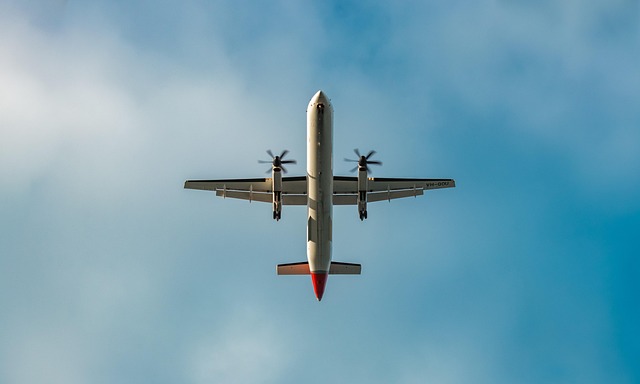The Best Time to Book Flights for Maximum Savings

Booking flights at the right time can save you hundreds of dollars, but with fluctuating prices and countless variables, finding the “sweet spot” can feel like a guessing game. Fortunately, years of data analysis and travel industry insights have revealed patterns that can help you secure the best deals. This guide will walk you through the best times to book flights, strategies to maximize savings, and tips to avoid common pitfalls.
1. General Rule: Book Early or Last-Minute?
Domestic Flights
- Best Time to Book: 1–3 months in advance.
- Booking too early (over 6 months) often results in higher prices because airlines release tickets at inflated rates initially.
- Waiting until the last minute (less than 2 weeks) usually leads to premium pricing due to limited availability.
International Flights
- Best Time to Book: 2–6 months in advance.
- International flights typically require more planning, so booking earlier ensures better seat selection and competitive fares.
- Popular routes during peak seasons (e.g., summer or holidays) may require booking even further ahead.
Key Takeaway:
For most travelers, booking domestic flights 1–3 months out and international flights 2–6 months out strikes the perfect balance between price and flexibility.
2. The Magic Day: Tuesdays and Wednesdays
Why It Works:
Airlines often release sales on Monday evenings, which are then matched or undercut by competitors throughout Tuesday. By Wednesday morning, these deals are widely available.
Action Steps:
- Set fare alerts using tools like Google Flights, Skyscanner, or Hopper to monitor price drops.
- Check flight prices midweek, especially around 3 PM EST when many sales are finalized.
Key Takeaway:
Tuesday afternoon and Wednesday morning are statistically the best days to find discounted flights.
3. Timing Within the Year: Off-Peak Travel
Peak vs. Off-Peak Seasons
- Peak Seasons: Holidays (Christmas, Thanksgiving), summer vacations (June–August), and spring break.
- Prices soar due to high demand.
- Off-Peak Seasons: January–February, September–early December (excluding holidays).
- Airlines lower prices to fill empty seats.
Action Steps:
- Avoid flying during major holidays if possible.
- Consider traveling during shoulder seasons (e.g., late April, early October) for milder weather and cheaper rates.
Key Takeaway:
Traveling during off-peak times can lead to significant savings and less crowded flights.
4. Timing Within the Week: Cheaper Days to Fly
Cheapest Days to Fly:
- Domestic: Tuesday, Wednesday, and Saturday.
- These days see lower demand from business travelers.
- International: Midweek flights (Tuesday–Thursday) are generally cheaper than weekend departures.
Most Expensive Days to Fly:
- Friday and Sunday are the priciest due to weekend getaways and business trips.
Action Steps:
- Use flexible date search tools to compare prices across different days.
- If your schedule allows, opt for midweek flights.
Key Takeaway:
Flying on less popular days can shave significant amounts off your ticket price.
5. Time of Day Matters Too
Best Times to Search and Book:
- Early Morning: Airlines often update their inventory overnight, releasing new fares early in the day.
- Late Night: Some platforms offer flash sales or discounts late at night to clear unsold inventory.
Key Takeaway:
Start your search early in the morning and revisit later at night for potential deals.
6. Tools and Strategies for Finding Deals
Fare Alerts
- Use apps like Google Flights, Kayak, or Scott’s Cheap Flights to track price trends and receive notifications when fares drop.
Flexible Date Search
- Platforms like Skyscanner and Momondo allow you to search across a range of dates, helping you identify the cheapest options.
Incognito Mode
- Browse flights in incognito mode to prevent websites from tracking your searches and potentially inflating prices.
Budget Airlines
- Consider low-cost carriers for short-haul flights, but factor in additional fees for baggage and seat selection.
Package Deals
- Bundling flights with hotels or car rentals through sites like Expedia or Travelocity can sometimes yield better overall savings.
Key Takeaway:
Leverage technology and comparison tools to uncover hidden deals and optimize your booking strategy.
7. Last-Minute Booking Tips
While booking early is ideal, there are exceptions where last-minute deals can be found:
- Error Fares: Mistakes by airlines or travel agencies occasionally result in deeply discounted tickets.
- Empty Seats: Airlines may slash prices close to departure to fill remaining seats.
- Last-Minute Apps: Use apps like HotelTonight or LastMinute.com for spontaneous travel opportunities.
Caution:
Last-minute bookings carry risks, as availability is limited and prices can spike unexpectedly.
8. Additional Tips for Maximizing Savings
Book Round-Trip Tickets
- Airlines often offer better rates for round-trip bookings compared to one-way tickets.
Avoid Connecting Through Major Hubs
- Direct flights to smaller airports may be cheaper than connecting through busy hubs.
Use Points and Miles
- Redeem frequent flyer miles or credit card points for free or discounted flights.
Clear Cookies
- Clear your browser’s cache regularly to ensure you’re seeing fresh prices, not inflated ones based on your search history.
Be Flexible with Airports
- Flying into or out of nearby airports can sometimes save money.




